
All categories
Featured selections
Trade Assurance
Buyer Central
Help Center
Get the app
Become a supplier

(913 products available)















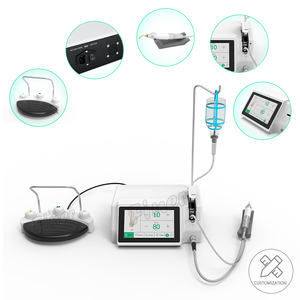

















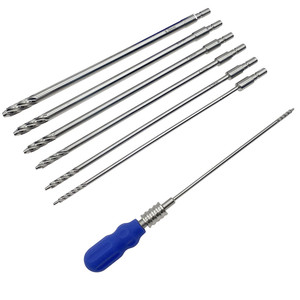



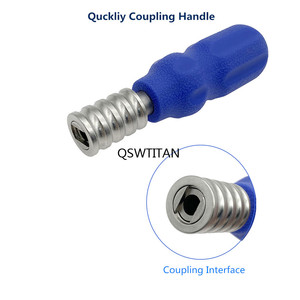




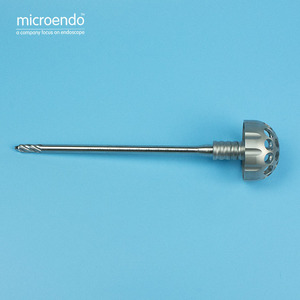
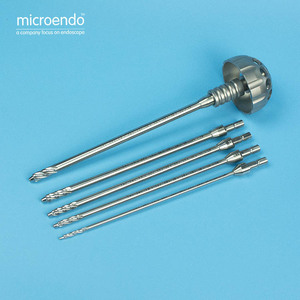
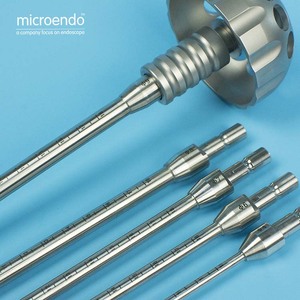
endoscopic spine drill play a vital role in the field of orthopedic surgery, designed to assist surgeons in performing delicate and complex procedures with precision. These instruments are crafted from high-quality materials such as stainless steel or titanium, ensuring durability and resistance to corrosion. endoscopic spine drill are engineered to meet the rigorous demands of surgical environments, offering a range of tools like bone saws, chisels, and retractors. They are meticulously designed to facilitate various orthopedic interventions, from joint replacements to fracture repairs. As technology advances, endoscopic spine drill continue to evolve, incorporating innovative features that enhance surgical outcomes and patient recovery.
Orthopedic surgery requires a diverse array of endoscopic spine drill to address the unique challenges presented by musculoskeletal conditions. Common types include cutting instruments like bone saws and chisels, which are essential for reshaping or removing bone. Holding instruments such as bone clamps and forceps are used to stabilize bones during surgery. Dissecting tools, including scalpels and scissors, allow for precise tissue separation. Additionally, retractors are vital for exposing surgical sites, ensuring visibility and access. Each type of endoscopic spine drill is designed with specific features to optimize functionality, such as ergonomic handles for better grip and control, and varying sizes to accommodate different surgical needs.
The primary function of endoscopic spine drill is to assist surgeons in performing orthopedic procedures with accuracy and efficiency. These instruments are equipped with features that enhance their usability and effectiveness. For instance, bone saws are often powered to facilitate rapid cutting, while chisels are designed with sharp edges for precise bone sculpting. Instruments such as retractors are adjustable, allowing for customized positioning to suit the surgical site. Many endoscopic spine drill are crafted with textured handles to prevent slipping, ensuring steady control during operations. Advanced models may include integrated sensors or digital interfaces to provide real-time feedback, further improving surgical precision.
The construction of endoscopic spine drill involves the use of robust materials to withstand the demands of surgical environments. Stainless steel is a common choice due to its strength and resistance to corrosion, providing longevity and maintaining sterility. Titanium is also favored for its lightweight properties and biocompatibility, making it ideal for instruments that require frequent handling. Some endoscopic spine drill incorporate coatings such as ceramic or diamond-like carbon to enhance durability and reduce friction. The choice of materials impacts the instrument's performance, with considerations for weight, balance, and tactile feedback. As sustainability becomes a focus, manufacturers are exploring eco-friendly materials and processes to minimize environmental impact.
Effective use of endoscopic spine drill requires a thorough understanding of their functionalities and limitations. Surgeons must select the appropriate instrument based on the specific procedure and anatomical region. Proper handling and maintenance are critical to ensure optimal performance and longevity. Instruments should be sterilized before use to prevent infection, and regular inspections are necessary to identify any wear or damage. Training in the use of endoscopic spine drill is essential, as familiarity with their features can significantly enhance surgical outcomes. In addition, adopting best practices for storage and transportation can prevent damage and ensure readiness for subsequent procedures. Continued education and adaptation to new technologies are vital for maximizing the benefits of these instruments in orthopedic surgery.
When selecting endoscopic spine drill, it's essential to consider the specific requirements of the surgical procedures they will be used for. Different operations may demand varying features and capabilities from the instruments. The first step is to evaluate the procedural needs, such as whether the surgery involves joint replacement, fracture repair, or ligament reconstruction. This assessment helps identify which tools are necessary, such as retractors for visibility, bone saws for cutting, or chisels for sculpting. Additionally, the choice of material plays a crucial role; stainless steel and titanium are popular for their durability and resistance to corrosion. Understanding these factors ensures that the endoscopic spine drill chosen will enhance the efficiency and precision of the surgical process.
Another important aspect is the ergonomic design of endoscopic spine drill. Surgeons rely on instruments that offer comfort and control during long procedures. Ergonomic handles reduce hand fatigue and improve grip, which is crucial for maintaining accuracy. The balance and weight of the instrument also affect its usability; lightweight designs are preferred for ease of maneuverability. Moreover, customization options such as textured grips or adjustable features can further tailor the instruments to meet the surgeon's preferences and specific surgical techniques. As technology advances, some endoscopic spine drill may incorporate digital enhancements or sensor-based interfaces, offering real-time data to aid in decision-making during operations.
The durability of endoscopic spine drill is primarily influenced by the materials used in their construction. Stainless steel is known for its strength and corrosion resistance, making it a common choice for surgical tools. Titanium offers lightweight properties and biocompatibility, which is advantageous for frequent handling. Additionally, coatings such as ceramic or diamond-like carbon can enhance durability and reduce friction. Proper maintenance and regular inspections are also crucial to ensure the longevity of these instruments.
Sterility is a critical factor in using endoscopic spine drill. Surgical teams must adhere to stringent sterilization protocols to prevent infections. Instruments should be thoroughly cleaned and sterilized using methods such as autoclaving or chemical sterilants. It's important to follow the manufacturer's guidelines for cleaning and maintenance, as improper sterilization can compromise the instrument's integrity and safety. Regular audits and training in sterilization techniques are essential to maintain a sterile surgical environment.
Yes, technological advancements have significantly impacted endoscopic spine drill. Modern instruments may feature integrated sensors that provide real-time feedback, enhancing precision during surgery. Digital interfaces can offer data on the instrument's position and pressure, assisting surgeons in making informed decisions. Additionally, advancements in material science have led to the development of lighter, stronger instruments that improve surgical outcomes. Staying updated with these innovations is crucial for surgical teams to leverage the benefits of cutting-edge technology.
Customization of endoscopic spine drill is possible and often necessary to meet the demands of specific surgical procedures. Custom features such as adjustable retractors or specialized blades can enhance the functionality of the instruments. Manufacturers may offer options for ergonomic designs tailored to the surgeon's preferences, improving comfort and accuracy. Customization ensures that the tools are perfectly suited to the surgical techniques and anatomical considerations involved in each operation.
Maintaining endoscopic spine drill involves several challenges, including regular inspections for wear and damage. Instruments must be checked for signs of corrosion, dullness, or mechanical issues that could impair their performance. Proper storage is also essential to prevent damage and contamination. Surgical teams need to follow best practices for cleaning, sterilization, and storage to ensure the instruments remain in optimal condition. Training in maintenance protocols can help mitigate these challenges and extend the lifespan of the tools.